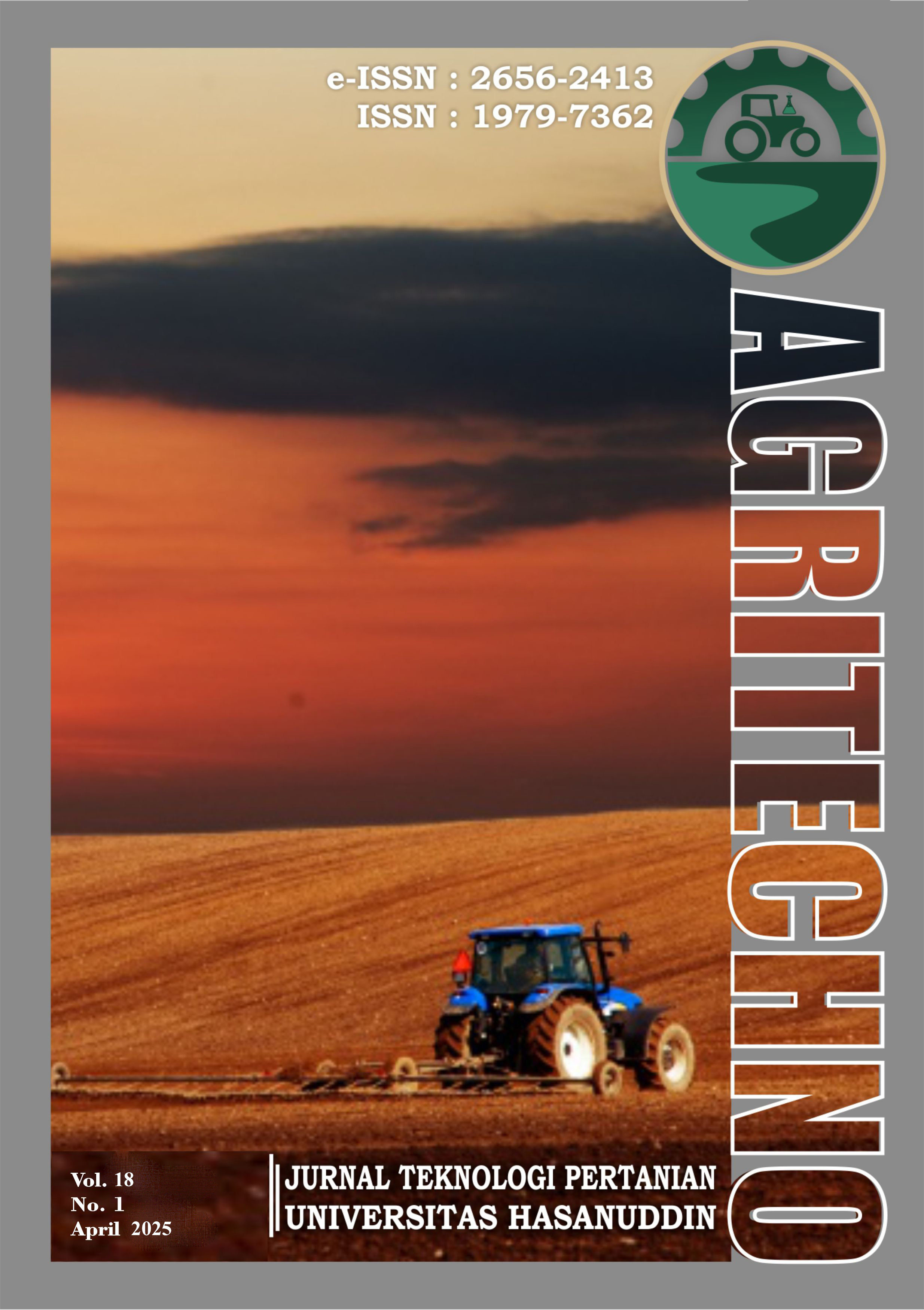EFFECT OF BLANCHING ON DRYING OF CAYANNE PEPPER (CAPSICUM FRUTESCENS L.)
##plugins.themes.academic_pro.article.main##
Abstract
Cayenne pepper is one of the agricultural products that is widely cultivated because it is widely used in the community for household needs, resulting in the need for chili peppers increasing every year. In getting better quality food products after the drying process. Drying food ingredients is usually done first, one of which is the blanching process. The method used with a batch dryer type with drying temperatures of 40 °C, 50 °C and 60 °C with 80 °C blanching treatment with 10 minutes and non-blanching. The results obtained at the drying rate experienced a rapid decrease in moisture content at the beginning of drying which was influenced by the blanching treatment and drying time. During the drying process, the lowest drying rate occurred in the non-blanching sample with a temperature of 40 °C and the highest occurred in the blanching sample with a temperature of 60 °C. The decrease in the moisture ratio value is influenced by the length of drying time carried out so that the longer the time the MR value decreases, the lowest value occurs in the non-blanching sample with a temperature of 40 °C and the highest is in the blanching sample with a temperature of 60 °C. In determining the mathematical model used, the best model is the page model because it is most suitable for describing the drying characteristics of cayenne pepper for all non-blanching and blanching treatments because it has the highest R2 value.
##plugins.themes.academic_pro.article.details##
References
- Ayusari, Waris, A., & Sapsal, M. T. (2024). Application of Fuzzy Control and IoT Monitoring on Small Scale Biofermentor for Making Virgin Coconut Oil. Salaga Journal, 02(2), 58–64. https://doi.org/10.70124/salaga.v2i2.1776
- Corcuera, J. I. R. De, Cavalieri, R. P., & Powers, J. R. (2004). Blanching of Foods. Encyclopedia of Agricultural ,Food, and Biological Engineering, May 2015, 1–5. https://doi.org/10.1081/E-EAFE-120030417
- Hani, A. M. (2012). Pengeringan Lapisan Tipis Kentang (Solanum Tuberosum L.) Varietas Granola. Universitas Hasanuddin.
- Marbun, F. G. I., Wiradimadja, R., & Hernaman, I. (2019). Pengaruh Lama Penyimpanan Terhadap Sifat Fisik Dedak Padi. Jurnal Ilmiah Peternakan Terpadu, 6(3), 163. https://doi.org/10.23960/jipt.v6i3.p163-166
- Musdalifah, N. (2012). Perubahan Warna pada Cabai Rawit (Capsicum frutescense L.) Selama Pengeringan Lapisan Tipis. Universitas Hasanuddin.
- Nauly, D. (2016). Fluktuasi dan Disparitas Harga Cabai di Indonesia. Jurnal Agrosains Dan Teknologi, 1(1), 57–69.
- Ramdani, H., Wicaksono, R. A., & Fachruddin, M. A. (2019). Penambahan Natrium Metabisulfit (Na2S2O5) terhadap Vitamin C dan Warna pada Proses Pengeringan Cabai Merah (Capsicum annuum L.) dengan Tunnel Dehydrator. Jurnal Agronida, 4(2), 88–97. https://doi.org/10.30997/jag.v4i2.1572
- Selpiah, S., Salengke, S., Salim, I., & Sapsal, M. T. (2023). Investigating the Influence of Blanching on the Drying Characteristics and Sorption Isotherm of Cherry Tomatoes (Lycopersicum Esculentum Var. Cerasiforme). Salaga Journal, 01(1), 37–43. https://doi.org/10.70124/salaga.v1i1.1107
- Sushanti, G. (2018). Laju Pengeringan Chips Mocaf Menggunakan Cabinet Dryer. Jurnal Galung Tropika, 7(3), 229–235.





